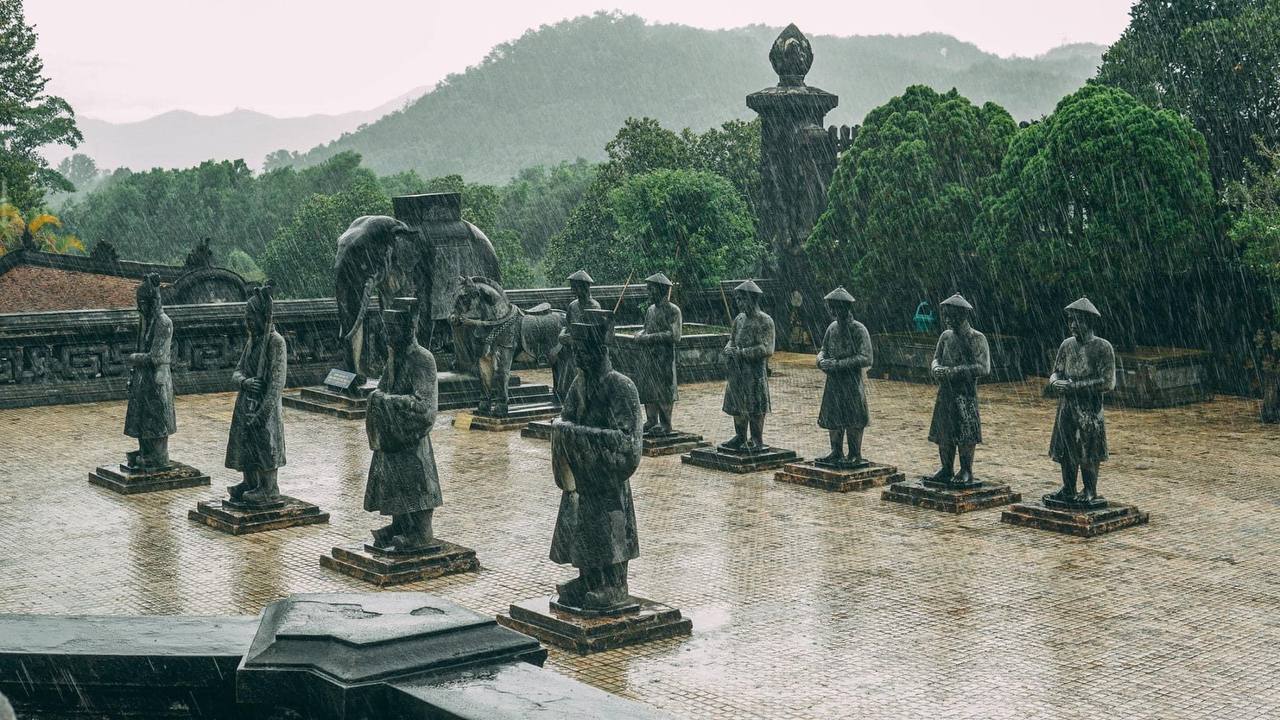Hue is known as the capital of our country under the Nguyen Dynasty and has always been one of the most attractive tourist destinations in Vietnam. With a long history, Hue tourism attracts by a unique culture, breathtaking natural landscapes and a series of ancient tombs. Each beautiful tomb in Hue contains invaluable values in architecture and history and becomes the pride of every citizen of the ancient capital.
Khai Dinh Tomb is an architectural combination of modern and classical beauty with many massive and elaborate works demonstrating the lavish lifestyle of King Khai Dinh during his time.

Khai Dinh Tomb seen from above
History of formation
Khai Dinh Tomb, also known as Ung Lang, is considered the most famous tomb in Hue. This is the tomb of King Khai Dinh, the 12th king and also the most modern king of the Nguyen Dynasty. Khai Dinh Tomb was built over 11 years (from 1920 to 1931), located on Chau Chu Mountain, Thuy Bang Commune, Huong Thuy District, about 10 km south of Hue city center.
The Tomb of King Khai Dinh is one of the relics belonging to the Complex of Hue Monuments recognized by UNESCO as a World Cultural Heritage in 1993. The tomb is considered to have the most outstanding architecture, and is the last construction of the Nguyen Dynasty.
Khai Dinh Tomb has a rectangular shape with 127 steps high, with the use of many reinforced concrete materials, the project combines both traditional Nguyen Dynasty architecture and many foreign architectural schools, from French architecture, Western architectural imprints with Roman, Gothic styles to Hindu and Buddhist architecture... King Khai Dinh sent people to France to buy construction materials such as iron, steel, cement, Ardoise tiles... and sent boats to China and Japan to buy porcelain and colored glass to construct the project.

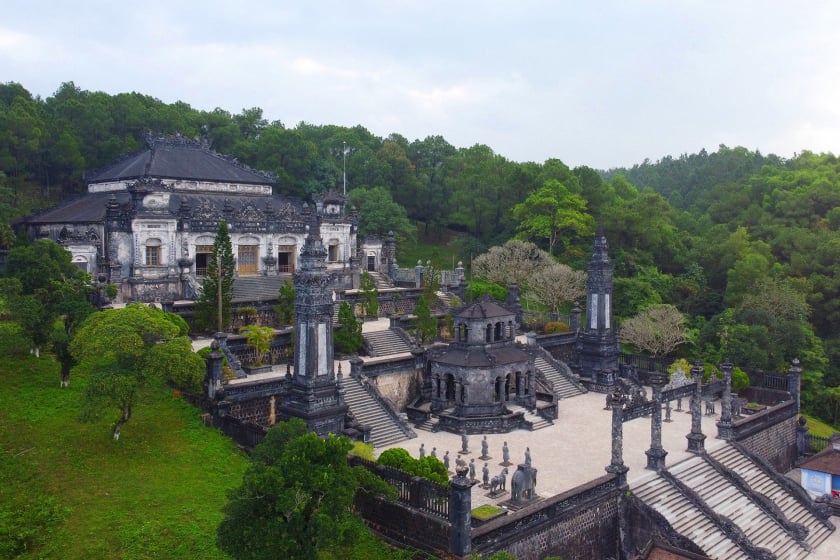
Considered the pinnacle of ceramic and glass sculpture, most of the structures in the mausoleum are decorated with these two materials. Under the bright yellow sunlight, the reflective glass pieces create an extremely magical space. Thanks to the contributions of Vietnamese artisans, Khai Dinh Tomb has become a symbol of the pinnacle of ceramic and glass sculpture.
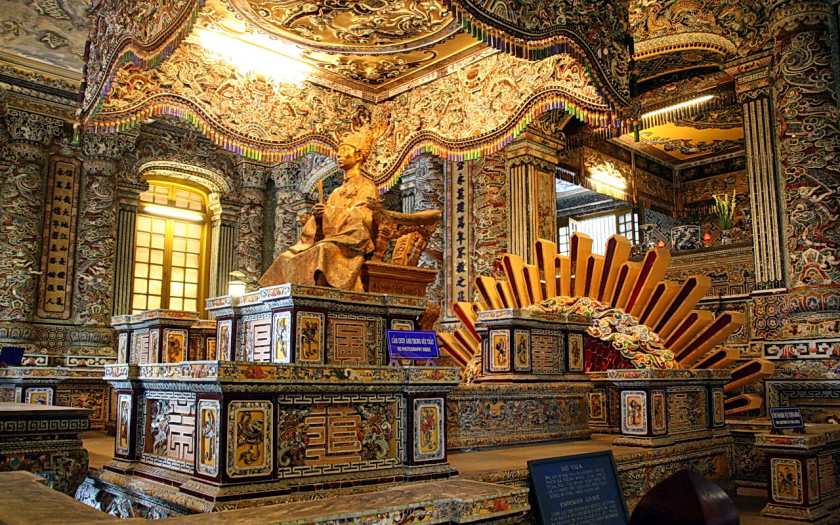
The most impressive is the burial area of King Khai Dinh with many details showing the majesty and grandeur of this king.
The main designer of this project is artist Phan Van Tanh, the author of the 3 largest paintings of "Nine Dragons Hidden in the Clouds" in Vietnam, which are decorated on the ceilings of the 3 middle rooms in Thien Dinh Palace. No one knows what kind of paint he used during the painting process, but over time the paintings have not faded or been damaged by insects. This is truly a unique highlight in the system at Khai Dinh Tomb that every visitor should see with their own eyes at least once.
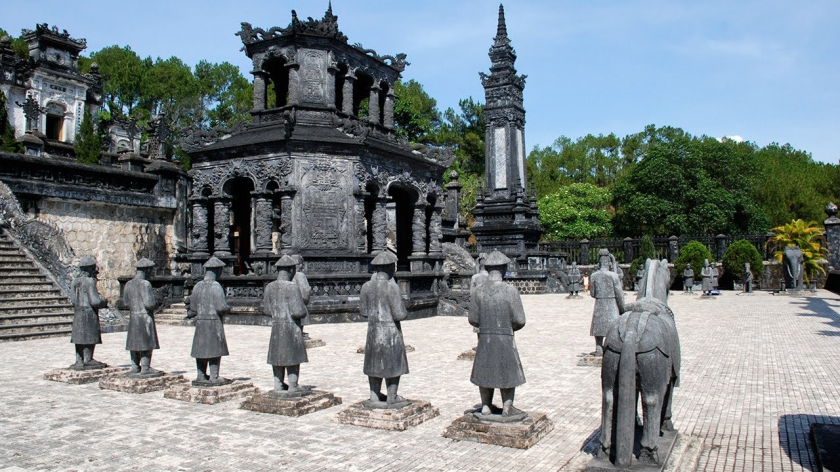
Standing out with its elaborate, sophisticated and artistic architecture, Khai Dinh Tomb (Ung Lang) has become one of the favorite places when visiting Hue.
Highlights of Khai Dinh Tomb Hue
It can be said that the tomb of King Khai Dinh Hue is a harmonious synthesis of many different architectural schools, combining ancient Vietnamese and Western architecture. Including 5 main points that visitors must explore when arriving:
Tam Quan Gate to Khai Dinh Tomb
The Tam Quan Gate is located on the first floor of the mausoleum, consisting of two main structures: Ta Tong Tu and Huu Tong Tu. This is the place where the craftsmen pay tribute to the mandarins who have contributed to the country. Right from the gate, you can see its grandeur. And to reach this gate, you need to climb 37 steps out of a total of 127 steps of the mausoleum.
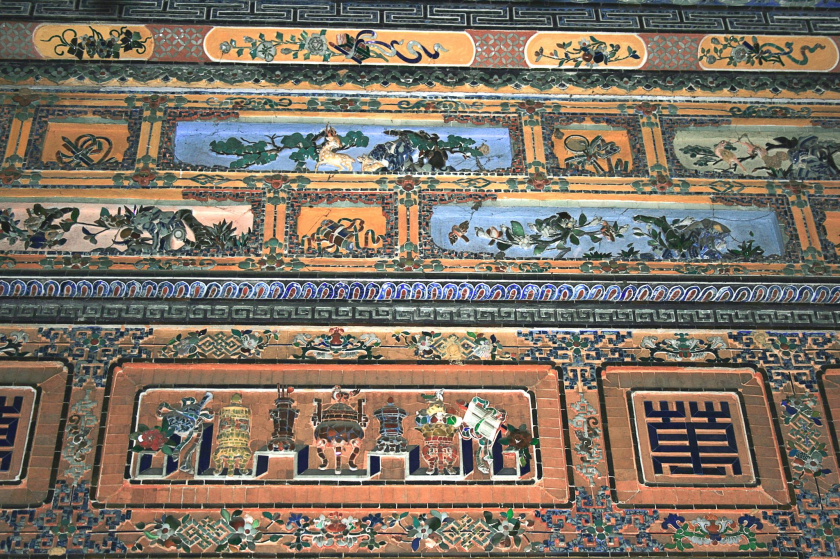
The art of porcelain mosaic is extremely sophisticated, impressive, meticulous down to the smallest detail to create an extremely impressive overall design.
Nghi Mon and Bai Dinh yard
Go up 29 more steps and you will reach the Nghi Mon area and Bai Dinh yard located on the second floor of Khai Dinh Hue Tomb. This place stands out with two rows of statues of civil and military mandarins carved like real people, a unique model that surprises all visitors when they see it with their own eyes.
Thien Dinh Palace - the highest position of Khai Dinh Tomb Hue
Located on the 5th floor, the highest position of the mausoleum, is the Thien Dinh Palace, which was elaborately and delicately built. The palace is rectangular, with a marble floor and the entire interior is invested in decoration with extremely sophisticated and beautiful porcelain and glass reliefs. All exude a solemn look, adding to the appeal of the mausoleum.
Khai Thanh Palace - where the altar of King Khai Dinh is located
This is where the altar of King Khai Dinh is located. The temple is cast in bronze-painted concrete, and the surrounding decorative motifs are also in the same golden color as the palace. Above is a plaque with the name Khai Thanh Temple engraved on it, and below this temple is the body of the king.
Bronze statue of King Khai Dinh inside the mausoleum
The bronze statue of King Khai Dinh placed at Ung Lang is a precious artifact of the Nguyen Dynasty kings. At the same time, through this, it helps future generations have a vivid picture of the appearance of this king during his lifetime.
After nearly 100 years of existence, the tomb of King Khai Dinh has become a special tourist destination of the ancient capital of Hue. Very few visitors to the ancient capital can ignore this architectural work. The special and unique features of the work always make both domestic and foreign tourists admire and surprise.
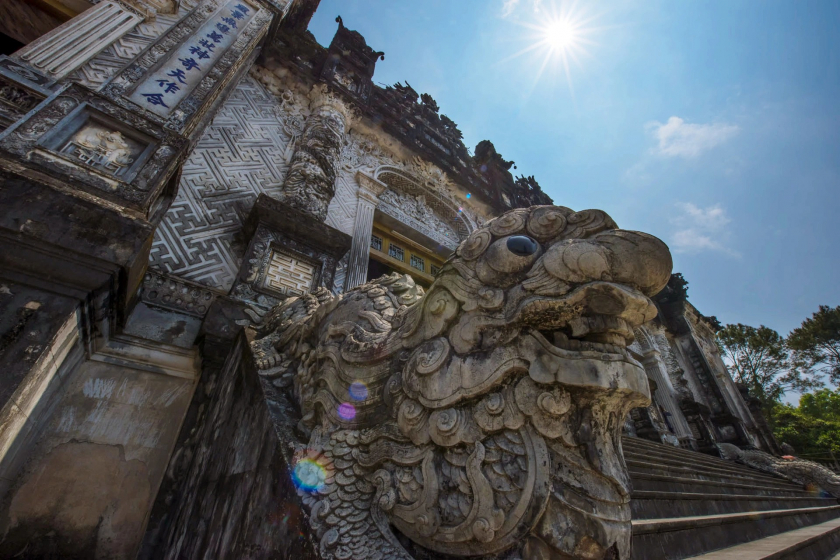
Khai Dinh Tomb is the last architectural work of the Nguyen Dynasty and is also the most prominent among the beautiful tombs in Hue, attracting a lot of tourists to visit. Despite its modest area, this is the work that cost the most money and effort during the construction process. Khai Dinh Tomb is not only considered the most beautiful tomb but also has many things that tourists cannot ignore when visiting this poetic city.
More information
Khai Dinh Tomb
Address: Thuy Bang commune, Huong Thuy district, about 10 km south of Hue city center
Admission:
Adult ticket price: 150,000 VND/trip
Children's ticket price: 30,000 VND/trip.





